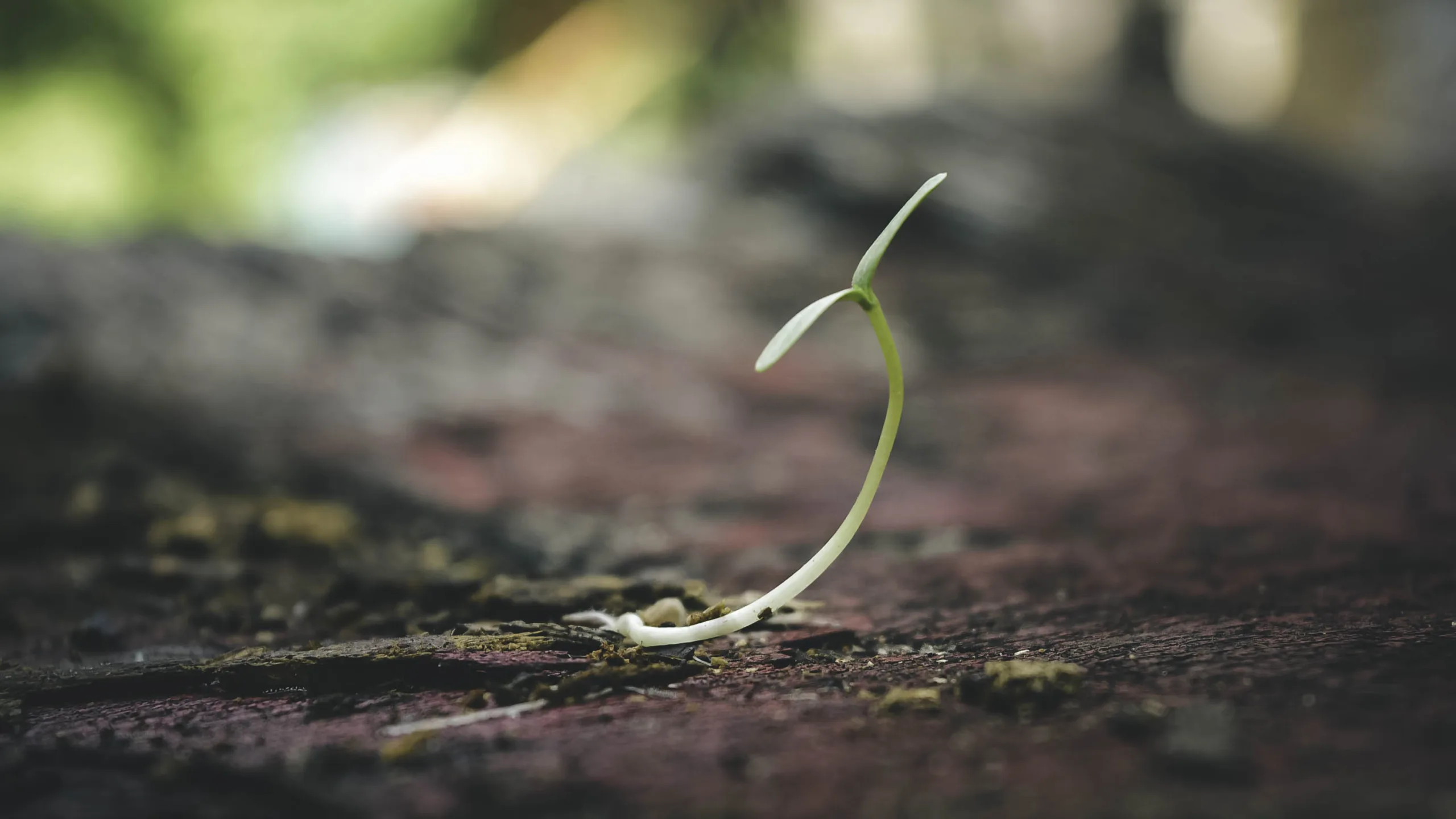Planting a tree in poor soil can be a challenging task, especially if you are not familiar with the right techniques. But it is possible to plant a tree successfully in this type of environment. This article will provide step-by-step instructions on how to plant a tree in poor soil, including the best choice of tree for the conditions, what type of soil amendments to use and how to care for the tree once it is planted. By following these simple steps, you will be able to enjoy the beauty and benefits of a thriving tree even when faced with difficult soil conditions.
Understanding poor soil involves learning about the characteristics of soil that make it less fertile, such as low levels of organic matter, lack of essential nutrients, and poor drainage. Additionally, understanding the causes of poor soil, such as erosion, over-farming, and deforestation, is important in order to prevent and improve it.
Choosing the Right Tree for Poor Soil
When selecting a tree for planting in poor soil, it is important to consider the environment and the types of trees that will thrive in such a location. Poor soil is typically defined as having low nutrient levels, limited drainage, and an inability to retain moisture. Trees need these essential elements in order to grow and thrive, so selecting a tree species that does well in such conditions is key.
When selecting a tree for planting in poor soil conditions, consider what type of environment the tree will be planted in. Trees that are drought tolerant or have special adaptations to survive on less water are ideal for areas with low rainfall or where water is scarce. These trees may include evergreens such as cedar, live oak, and pines as well as deciduous trees like oaks and maples.
Trees with deep root systems are also recommended for poor soils since they are able to reach down further into the ground to absorb more nutrients. Species like American elm, poplar, and pin oak have roots that extend several feet below the surface of the soil. These trees also tend to tolerate dry soils better than shallow-rooted species like birch and ash.
When selecting a tree for planting in poor soil conditions, it’s also important to consider its growth rate. Fast-growing varieties can quickly outpace their competitors for nutrients and water if planted in an area with limited resources. Slow-growing varieties like white fir or hemlock may be better suited since they require less resources over time but still provide shade and beauty.
Finally, when choosing a tree species for an area with poor soil quality, look at its disease resistance and insect resistance abilities. Trees that are more tolerant of diseases or pests will require less maintenance over time and reduce the need for chemical treatments or other interventions which may harm nearby wildlife or ecosystems. Species such as baldcypress, red maple, cypress, sweetgum, and tulip poplars have natural defenses against pests or diseases which make them ideal choices for planting in less than ideal soils.
With careful consideration of all these factors when selecting a tree species for planting in poor soil conditions, you can ensure your landscape project will be successful over time!
Preparing the Planting Area
When preparing the planting area, it is important to consider the type of soil, the amount of sunlight and water, and the size and shape of the space. The soil should be tested to ensure it is not too sandy or clay-like, as this may present difficulties for plant growth. It is also important to determine if the soil is acidic or alkaline. Depending on the type of plants being grown, amendments may be needed to make sure it is suitable for them.
The amount of sunlight and water in an area can have a significant impact on how well plants grow. It is important to assess how much sunlight and water will be available before planting. If there are areas that are too shady or too wet, plants may struggle to survive in such conditions.
The size and shape of the planting area will also need to be taken into account when planning a garden or landscape design. If there are limited resources available, it may be necessary to select plants that are better suited for smaller spaces or areas with odd shapes. In addition, it is important to carefully consider how much room each plant needs in order for it to thrive.
Finally, once all these factors have been considered, it is time to start preparing the soil for planting by removing any weeds or debris that could interfere with new growth. It may also be necessary to add amendments such as compost or fertilizer in order to improve drainage and fertility levels within the soil. After this has been done, any necessary irrigation systems should also be put into place before adding any new plants into the planting area.
Digging a Hole for Planting
Digging a hole for planting is an important step in gardening. Depending on the size and type of plant, the size of the hole will vary. It is important to make sure the hole is deep enough and wide enough for the root system of the plant. To prepare the soil, it is best to use a shovel or spade to dig a hole that is twice as wide as the plant’s root ball and just as deep.
When digging, it is important to loosen up and break up any large clumps of soil in order to help with drainage. Once you are finished digging, check to make sure the sides of the hole are straight and that there are no obstructions or large rocks in the bottom. If necessary, use a trowel to smooth out any irregularities in the walls or bottom of the hole before planting.
When planting perennial plants, it is important to dig down deep enough so that when you fill in around them with soil, their crowns are slightly below ground level. This will help protect them from drought and frost heaving during winter months. When planting annuals or vegetables, it’s best to keep their crowns at or slightly above ground level to ensure they receive adequate sunlight and air circulation.
Once you have finished digging your holes, they should be approximately two-thirds full with soil before adding any compost or fertilizer. This will give your plants plenty of room for their roots to grow without becoming overcrowded by other materials in the soil. After adding compost and fertilizer, fill in around your plants with more soil until they are firmly planted at their desired depth and water thoroughly after planting so that all air pockets are eliminated from around their roots.
Planting Properly in Poor Soil
Growing plants in poor soil can be a challenge, but it doesn’t have to be. With the right techniques and knowledge, you can successfully grow plants even in soil that isn’t ideal. Before planting anything, it’s important to assess the soil to determine what kind of nutrients you need to add in order to make it suitable for plant growth. Once you have a good understanding of what your soil needs, you can begin amending the soil with organic matter and fertilizers as needed.
When planting in poor soil, it’s important to dig deep into the ground and break up any hard chunks of soil. This will help create more space for roots to grow and make it easier for water and nutrients to reach them. You should also consider adding mulch around the base of your plants to help keep moisture levels consistent. Adding some compost or other organic matter into the hole when planting will also help improve drainage and water retention.
It’s also essential to water your plants regularly when they are first planted, as they need plenty of moisture while their root systems become established. Once they are well-rooted, you may need to adjust how much water you give them depending on how quickly the soil is drying out. Fertilizing your plants regularly with an appropriate fertilizer will also help give them a boost while they are establishing themselves.
Finally, when selecting which plants to grow in poor soils, look for varieties that are known for being tolerant of low-nutrient soils or those specifically adapted for growing in sandy or clay-type conditions. These types of plants may require less additional care than other varieties might and could be better suited for growing successfully in these challenging conditions.
By following these tips for planting properly in poor soils, you’ll be able to establish healthy plant growth where success has seemed impossible before!

Watering the Tree
Watering a tree is an important part of tree care. Proper watering helps ensure that the tree will remain healthy and strong. The amount of water a tree needs depends on the species, size, and climate. Newly planted trees require more frequent watering than established trees, as their root systems are not yet fully developed. To water a tree correctly, apply enough water to moisten the soil to a depth of 12 inches around the base of the tree. Water slowly to allow the water to penetrate deeply into the soil. For large trees, it may be necessary to use soaker hoses or drip irrigation systems that deliver water directly to the roots.
Mulching the Tree
Mulching is another important aspect of tree care that helps keep moisture in and weeds out. When mulching around a tree, create a ring of mulch extending 2-4 inches from the base of the trunk outward in a circle. Do not pile mulch directly against the trunk as this can trap moisture and encourage rot and disease. Mulch should be replaced periodically as it breaks down over time. The type of mulch used depends on individual preferences but should be organic and free from contaminants such as herbicides or insecticides.
Adding Nutrients to Poor Soil
Adding essential nutrients to poor soil is essential for promoting healthy plant growth and development. Poor soil can be amended with organic matter, such as compost or manure, which help improve fertility and texture. Additionally, fertilizers can be added in order to provide the necessary nutrients for plants to grow and thrive.
Organic matter helps improve soil structure by increasing the amount of organic material and providing food for beneficial microbes. Compost is an excellent source of organic matter, as it contains a variety of nutrients that are beneficial to plant growth. Manure is also a good source of organic matter, but it should not be used in areas where runoff may occur, as it can contaminate waterways.
Fertilizers are another way to add essential nutrients to poor soils. They come in a variety of forms, including synthetic and natural options. Synthetic fertilizers are made from chemical compounds, while natural fertilizers are derived from animal or plant sources. Both types provide key nutrients that plants need for healthy growth, but natural fertilizers tend to break down slowly over time so they provide continuous nutrition for plants throughout the growing season.
In addition to adding essential nutrients, good soil management practices such as crop rotation and cover cropping should be employed in order to maintain soil fertility over the long term. Crop rotation helps prevent nutrient depletion by allowing different crops to take advantage of different soil conditions during each growing season. Cover crops help reduce erosion by trapping sediment and providing additional organic matter when tilled into the soil.
Overall, adding essential nutrients to poor soils is essential for promoting healthy plant growth and development. Organic matter helps improve fertility and texture while synthetic and natural fertilizers provide key nutrients for plants. Good management practices such as crop rotation and cover cropping should also be employed in order to maintain soil fertility over time.
Composting for Better Soil Quality
Composting is an important process for improving soil quality and fertility. It involves the natural breakdown of organic matter, such as food scraps, yard trimmings, and other materials, into a nutrient-rich soil amendment. Compost improves soil structure and aeration, helps retain moisture in the soil, and increases its fertility by adding valuable nutrients. In addition to improving soil quality, compost also helps reduce waste by recycling organic materials that would otherwise be thrown away.
The process of composting is relatively simple. The first step is to collect organic matter from around your home or garden. This can include vegetable scraps, grass clippings, coffee grounds, eggshells, leaves, twigs, and other biodegradable items. These materials should be placed in a compost bin or pile in a way that allows air to circulate around them. Once the compost pile has been established, it needs to be monitored regularly to ensure that it is receiving enough moisture and oxygen to promote decomposition.
Once decomposition begins, the compost should be turned occasionally with a shovel or pitchfork to ensure that all of the material is being exposed to air. This will speed up the breakdown process and help create a nutrient-rich compost more quickly. Depending on the size of your pile or bin and local climate conditions, the compost may take anywhere from several weeks to several months to fully break down.
Once fully decomposed, the compost can be added directly into garden beds or mixed with potting soil for use in containers or raised beds. Compost can also be used as an amendment for lawns or landscaping areas by spreading it over the surface of the soil and then lightly tilling it into place with a rake or tiller. Whatever method you choose for incorporating compost into your garden will improve its overall health by providing essential nutrients and increasing its ability to retain water and support plant growth.

Conclusion
Planting a tree in poor soil can be a challenging task, but with the right knowledge and proper preparation, it is possible. The most important thing to keep in mind is to make sure the soil is well-drained and free of compaction. Additionally, it is important to use a nutrient-rich soil mix and fertilizers that are specifically formulated for trees. Finally, mulching around the tree can help protect its roots from erosion and provide additional nutrients for growth. With these guidelines in mind, anyone can successfully plant a tree in poor soil.
Planting trees is an important part of preserving our environment, and having the right know-how to do so will ensure that your tree has the best chance at long-term success. With proper preparation and care, you can ensure that your tree will thrive even in poor soil conditions.

My interest in trees started when I first saw the giant sequoias in Yosemite.
I was a teenager then, and I remember thinking, “I need to learn more about this.”
That moment stuck with me.
A few years later, I went on to study forestry at Michigan Tech.
Since graduating, I’ve worked in a mix of hands-on tree care and community education.
I’ve spent over ten years helping people understand how to plant, maintain, and protect the trees in their neighborhoods.
I don’t see trees as just part of the landscape.
They are living things that make a real difference in our daily lives.
